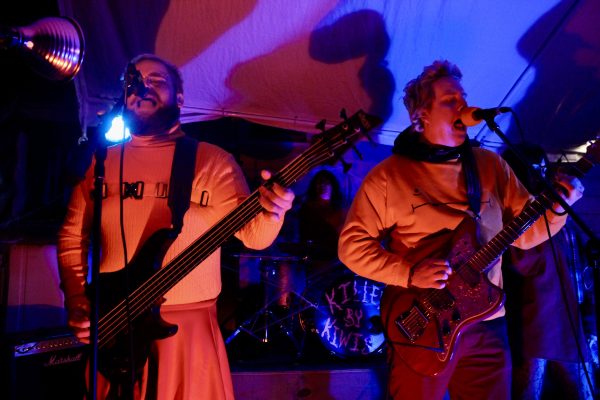Musical “Ragtime” packs a powerful punch
Theater Latté Da’s performance leaves audience on their feet, thundering applause.
November 2, 2016
Lights faded to black for a moment before they rose pinpointed on a seamless door in the backdrop of the stage. Feet shuffled. Throats cleared in coughs. Then, silence as a bright red balloon bounced through the door, leading behind a capped boy clutching its string. Thus began “Ragtime.”
With their final show on Oct. 23, Theater Latté Da in Minneapolis completed the musical for the season, but the questions it raised about race and perspective still hang in the air.
“Ragtime” is a musical that attempts to capture a piece of the early 20th century through the lens of three intersecting groups in the United States: African-Americans, white upper class families of suburbia and immigrants from Eastern Europe.
Coalhouse Walker Jr., a pianist from Harlem, represented the first group. David L. Murray, Jr. played his part.
Mother, named only by her title, represented the suburbanites in New Rochelle, New York.
A duo stood in for the immigrants, Tateh and his daughter from Latvia, who arrive in America as the play begins.
For the opening scene, every player marched onto the stage and burst into song. Their feet kept time while their voices bounded around the room. Celebrity figures of the 20s introduced themselves, layering in historical background to the fictional in the representative story.
From the first spotlight on the stage, the entire performance came to life with bright, lively characters, and a novel expression of scenes took the audience. Laundry sprang up across the entire stage in one scene to cast the aura of an immigrant alley way, only for lights and banners to replace them when Atlanta became the setting.
From powdery white snow sprinkling onto a poor, freezing Tateh to a velvet swing supporting celebrity icon Evelyn Nesbit as she swung across the stage, the work boasted a rich scene design.
Coalhouse began a weekly tradition of visiting Sarah, his long-lost love, where she resides with Mother, trying to win her back to him; the crew utilizes a set of ladders and raised doorways in the middle of the stage to create a dynamic and diverse depth.
Societal rankings are visibly performed as J.P. Morgan sings over a crowd of immigrants from a raised vantage point.
The play, though fictional, mimics the reality of the time but also of modern life.
Immigrants are saddled with disparaging remarks or ignored completely. Coalhouse is faced with harsh racism when he attempts to find Sarah in the suburbs. A crew of volunteer firemen escalated from heckling Coalhouse to destroying his Model-T Ford, brought to life in a piano wheeled across the stage with Murray seated atop.
Demanding justice, Coalhouse postponed his wedding to Sarah. Coincidentally, the vice-presidential candidate was set to campaign in town. Sarah appeared and appealed to the president, waving her hands for his attention. But, with a false call of “gun,” law enforcement hauled her away and beat the woman to death. Coalhouse went on a violent rampage, leaving Mother to raise his and Sarah’s child.
The entirety of the plot wound down as Coalhouse, framed by a center door on stage, became a shadow illuminated to red lights and the echoing of gunshots.
Mirroring the start of the play, each character summarized their new placement and future after the years shown on stage. The final moments saw a young Coalhouse Walker III, suddenly no longer a prop doll wrapped in blankets, but a real, human child who rushed across the stage to an audible gasp from the gathered audience.
At its close, people rose, filling the space with thundering applause to rival the strong voices that filled it before when the actors’ powerful vocals captured the racial crisis that bridges the gap between both fiction and reality, the 20s and today.




